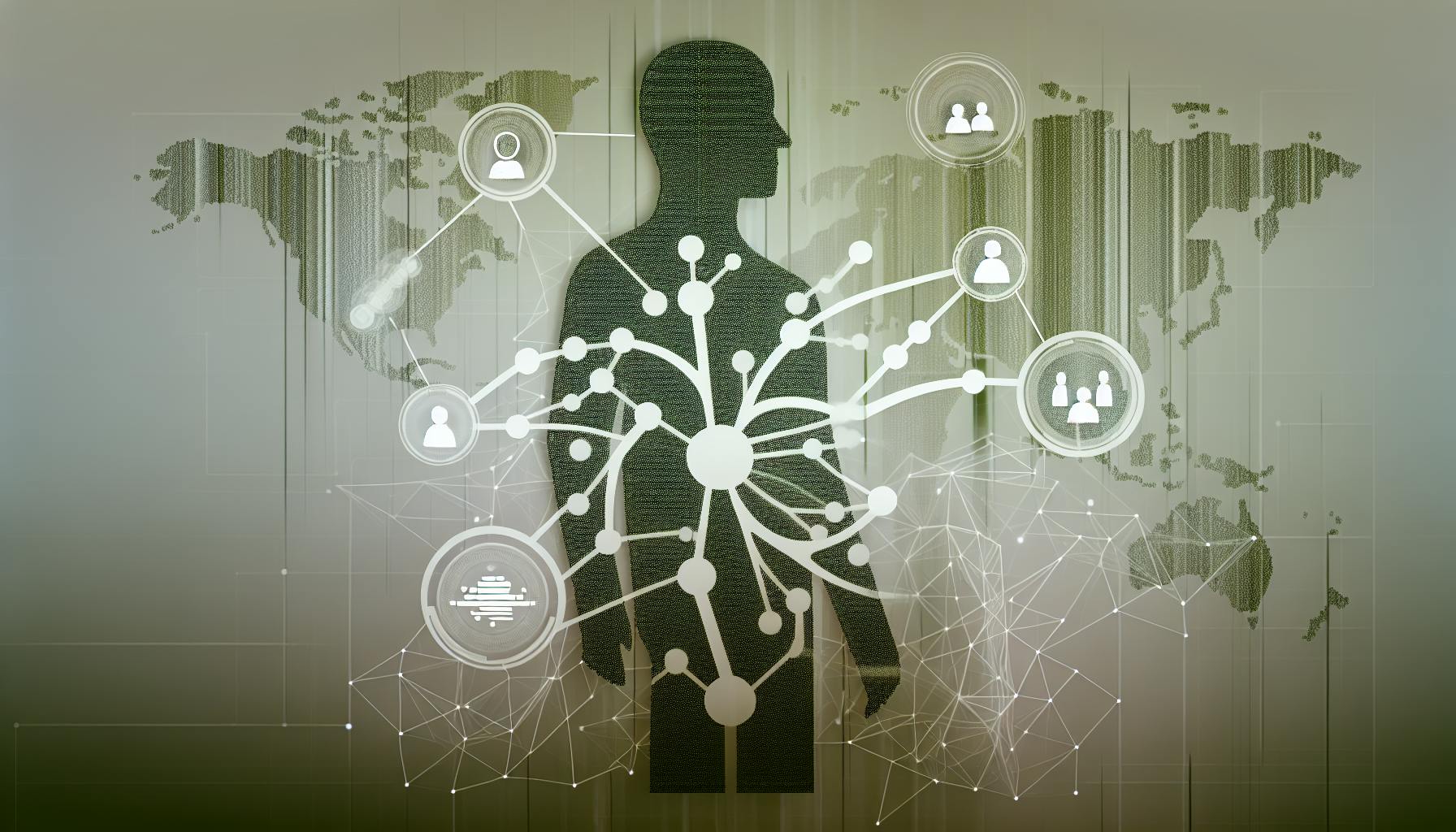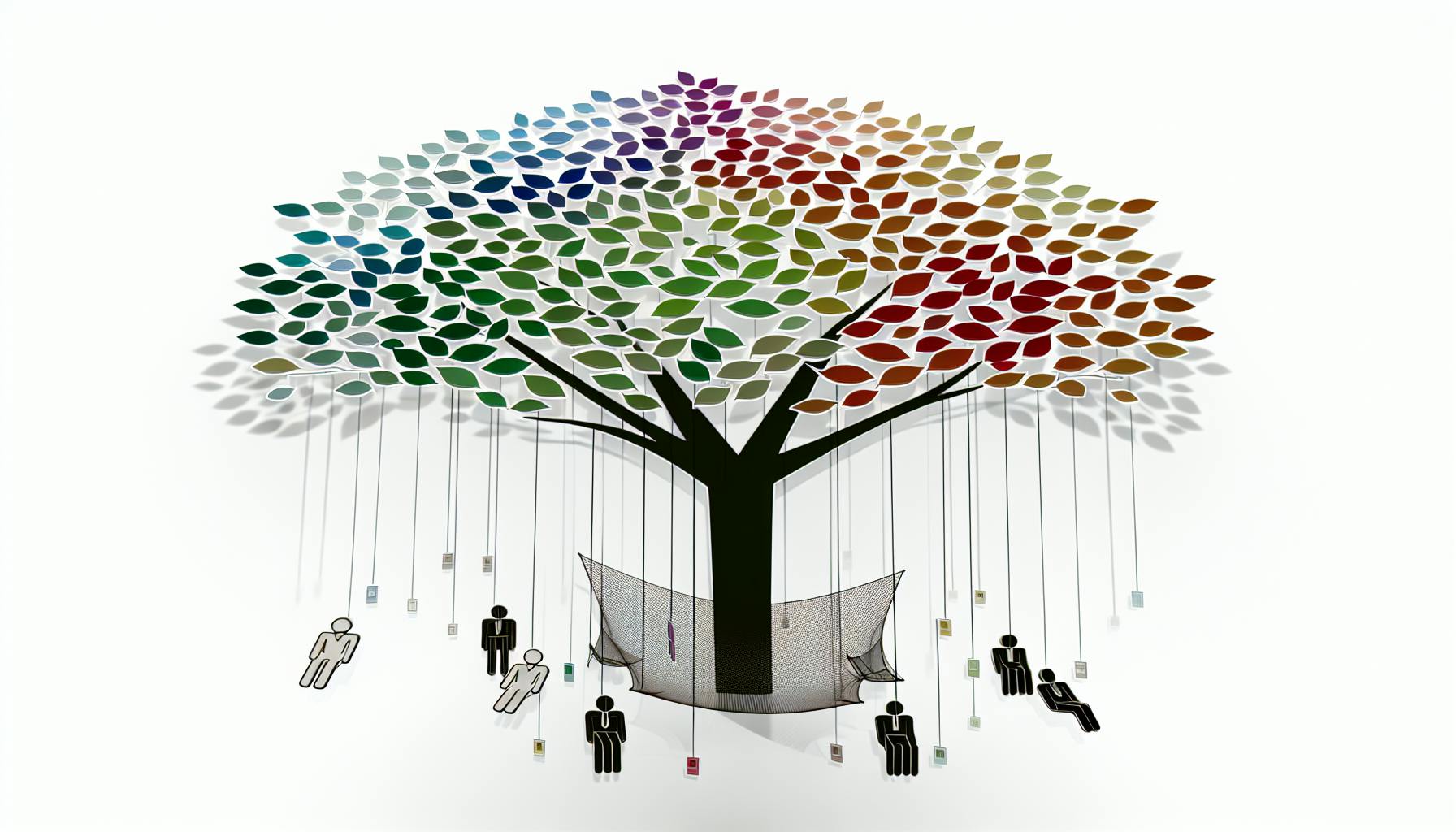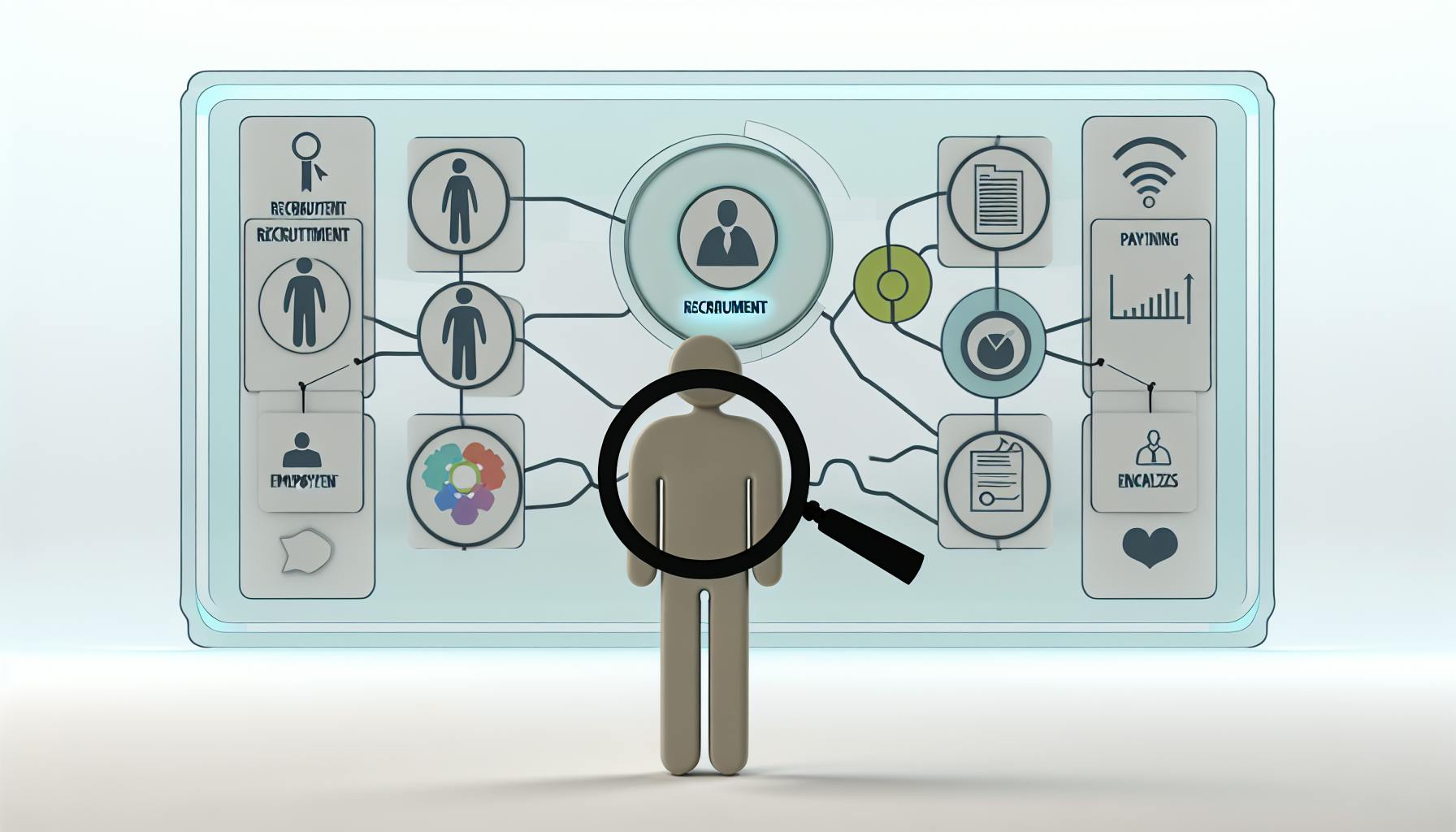We can all agree that bias and unconscious bias negatively impact workplace culture and employee engagement.
The good news is that new technologies are emerging to help identify and mitigate bias in hiring, performance reviews, promotions, and more.
In this post, we'll define bias and unconscious bias, look at examples, and review tech-based solutions that can assist HR teams in reducing bias for a more diverse, equitable, and inclusive workplace.
Understanding Bias and Unconscious Bias in HR
Bias and unconscious bias refer to prejudices, stereotypes, and assumptions that individuals hold, often unconsciously, about certain groups. These biases, when unchecked, can influence decisions and behaviors in the workplace in ways that limit diversity, equity, and inclusion.
Defining Bias and Unconscious Bias in the Workplace
Unconscious biases are social stereotypes about certain groups of people that individuals form outside their own conscious awareness. These biases arise from people's tendency to organize social worlds by categorizing. Common types include:
- Affinity bias: Favoring people like oneself
- Confirmation bias: Seeking and interpreting information that supports one's existing beliefs
- Beauty bias: Equating attractiveness with competence
- Gender bias: Making assumptions based on gender
- Ageism: Stereotyping based on age
When unconscious biases go unchecked in the workplace, they can negatively impact hiring decisions, performance reviews, promotions, and company culture.
How Unconscious Bias Affects Workplace Dynamics
Unconscious biases can permeate workplace policies, practices, and interactions, leading to:
- Decreased diversity in hiring and promotions
- Lack of inclusion in company culture
- Missed opportunities to add value from different perspectives
- Legal compliance issues
Ultimately, unchecked biases result in talent loss, reduced innovation, lower employee engagement and satisfaction.
The Imperative for Reducing Bias in HR
HR plays a pivotal role in cultivating diverse, equitable, and inclusive workplaces. Addressing unconscious bias is crucial for:
- Complying with EEOC regulations
- Improving sourcing and hiring of diverse talent
- Enhancing inclusion and engagement
- Identifying gaps in equitable policies and practices
- Promoting unbiased performance evaluations
- Developing equitable compensation structures
HR professionals must be armed with practical tools and training to recognize and mitigate biases throughout talent management processes.
What is the difference between bias and unconscious bias?
Bias and unconscious bias refer to prejudiced attitudes and stereotypes that influence our understanding, decisions, and actions. The key difference lies in the level of awareness and control over these biases.
Conscious bias refers to prejudiced attitudes and stereotypes that we are actively aware of and can consciously access. For example, someone may be aware that they view certain groups more negatively but openly express those views anyway, representing a conscious bias.
On the other hand, unconscious biases operate outside of our awareness and conscious control. These are biases that are more subtle, automatic, and difficult to consciously access or identify within ourselves. Unconscious biases are unintentional yet still influence our perceptions, judgments, and behaviors, often in ways we don't realize.
For instance, someone who believes they give equal opportunities to all candidates during recruitment may unconsciously favor resumes with typically "white-sounding" names over equally qualified "ethnic-sounding" names. Such unconscious biases can negatively impact diversity and inclusion within organizations.
The influence of unconscious biases can be far more prevalent than conscious prejudice. Bringing unconscious biases into awareness through education, self-reflection exercises, and bias mitigation training is an important first step organizations can take towards reducing bias in workplace policies, processes, and culture for better diversity, equity and inclusion.
What is unconscious bias examples?
Here is an example of unconscious bias in the workplace:
A male manager thinks that men generally work harder than women. When he is recruiting for a new position on his team, he receives applications from a highly qualified female candidate and a moderately qualified male candidate. Despite the female candidate being the stronger applicant based on the recruitment process, the manager chooses to hire the male candidate because of his unconscious gender bias. He assumes that the man will be a harder worker, even though the evidence from the interviews and assessments showed otherwise.
This is an instance of unconscious bias, where people make judgments or decisions that favor certain groups over others, without realizing that they hold these biases. In this case, the hiring manager's belief that men make better, more diligent employees impacted his decision and led him to hire the less competent male applicant. His bias shaped his evaluation of the candidates' abilities and influenced which candidate he chose to bring onto his team.
Other examples of unconscious bias include:
- A recruiter asking different types of questions to female candidates compared to male candidates in interviews, making unfair assumptions about women's career goals or capabilities.
- A manager giving a lower performance rating to an older employee compared to a younger employee, subtly influenced by stereotypes around age and ability to learn new skills.
- An HR professional shortlisting more candidates with typically "white-sounding" names, indicating a potential racial or ethnic bias in the screening process.
The influence of unconscious biases can profoundly, and often negatively, impact talent management decisions, unfairly shaping opportunities and outcomes for certain groups of people. Identifying instances of unconscious bias is the first step organizations can take towards mitigating its effects and building more inclusive, equitable workplaces.
What are the 3 types of bias?
Bias can negatively impact organizations in many ways, leading to unfairness, lack of diversity, and poor decision making. As an HR professional, it is critical to understand different types of biases to mitigate their effects.
Information Bias
This refers to bias arising from misinformation or lack of information. For example, recruiters may associate certain schools with higher talent levels, leading them to disproportionately hire graduates from those institutes. However, quality candidates can come from anywhere. Relying too much on academic pedigree can introduce bias.
Selection Bias
This occurs when the selection process for a job systematically excludes certain groups. Legacy hiring practices that emphasize culture fit tend to replicate the existing workforce instead of introducing diversity. Structured interviews, standardized scorecards, and skills-based assessments can help reduce selection bias.
Confounding Bias
Also called attribution bias, this happens when a factor influencing an outcome is mistaken as the actual cause. For instance, the time of day interviews are held could impact candidate performance if they are scheduled too early or late. However, the interview timing should not influence the actual hiring decision.
Understanding bias enables organizations to pinpoint issues and improve processes. HR professionals can leverage AI tools that scan for bias indicators in workplace content and systems. Combining technology with updated policies and training helps in creating equitable, inclusive work cultures.
sbb-itb-34a8e9f
What is a bias example?
Here is an example of bias in the workplace:
If a hiring manager, Joe, is reviewing applications for an open position and assumes that male candidates would be better suited for the job than equally qualified female candidates, Joe has a gender bias. He believes that a candidate's gender, which has no bearing on job qualifications or performance, should influence the hiring decision. This negatively impacts female applicants and inhibits diversity.
Some other examples of common biases that can affect workplace decisions:
-
Affinity bias: Favoring candidates who share similarities with the hiring team, like belonging to the same social groups or alumni networks. This can limit diversity.
-
Beauty bias: Equating attractiveness with competence when evaluating candidates. This ignores actual job qualifications.
-
Confirmation bias: Seeking or interpreting information that supports preexisting beliefs. For example, placing more weight on a candidate's positive qualities that align with stereotypes.
-
Conformity bias: Valuing candidates that fit in with the existing culture over those that could enhance diversity and bring new perspectives.
-
Recency bias: Giving stronger consideration to a candidate interviewed more recently than earlier candidates regardless of qualifications.
These unconscious biases can influence workplace decisions in subtle ways. Using structured interviews, diverse hiring committees, clear evaluation criteria, and AI tools to analyze job postings and evaluations for bias can help organizations make more equitable, performance-based talent decisions.
Identifying Bias in Key HR Processes
Bias can negatively impact various HR processes if left unaddressed. Structured frameworks and unconscious bias training can help organizations identify and mitigate issues.
Bias in the Recruiting Industry: Overcoming Ingrained Prejudices
The recruiting process is vulnerable to biases that can limit diversity hiring goals. For example:
- Gender bias placing more weight on stereotypically masculine traits
- Ageism dismissing qualified older candidates as less adaptable
- Confirmation bias focusing on candidates that fit existing norms
Unconscious bias training helps recruiters recognize prejudices. Structured applicant reviews using standardized criteria also minimize bias. Setting diversity hiring goals reinforces commitment to equitable practices.
Structured Applicant Review: Ensuring Fair Evaluation
Structured applicant reviews evaluate candidates consistently on job-relevant criteria, avoiding pitfalls like:
- Culture fit bias overlooking qualified candidates that don't match existing norms
- Beauty bias influenced by attractiveness instead of skills
Using structured scorecards and rubrics maintains focus on skills, experience and cultural add. This ensures candidates get fair consideration.
Performance Reviews: Objectivity through Unconscious Bias Training
Biases negatively impact performance reviews:
- Gender biases lead to underestimating women's contributions
- Confirmation bias focuses on evidence supporting existing beliefs
Unconscious bias training helps managers recognize prejudices. Structured review frameworks reduce subjectivity. This enables factual, objective performance evaluations that offer equal opportunities for professional growth.
Promotion Decisions: Avoiding Beauty Bias and Other Pitfalls
Biases can skew promotion decisions:
- Beauty bias advances attractive candidates even if less qualified
- Ageism dismisses candidates perceived as less adaptable
DEI initiatives reinforce equitable practices, including structured promotion frameworks using consistent, job-relevant criteria. This avoids bias and builds a diverse, inclusive culture.
Leveraging Technology to Combat Unconscious Bias
Unconscious bias refers to the automatic associations people make between groups of people and stereotypes about those groups. These biases often negatively impact workplace decisions and processes. HR professionals have a responsibility to identify and mitigate biases that lead to unfair and inequitable treatment of employees.
Fortunately, technology offers innovative solutions to detect and reduce unconscious bias in talent acquisition, performance reviews, compensation analysis, and more.
AI-Driven Talent Assessments: Neutralizing Bias
AI-powered talent assessments analyze job applications and candidate materials for biased language or evaluation. By flagging potentially prejudiced content, they enable recruiters to make informed, equitable decisions.
Structured interviews and standardized evaluations further remove bias from the hiring process. AI determines optimal questions and scoring methods to focus evaluations on job-relevant skills. This promotes diversity and meets EEOC guidelines.
The Role of Interview Scorecards in the Interview Process
Interview scorecards standardize assessments so candidates are evaluated equitably on relevant criteria. Scorecards mitigate bias by:
- Defining ideal employee qualities beforehand, rather than basing evaluations on instinct or first impressions
- Using the same rubric for every interviewee rather than changing criteria
- Scoring candidates numerically rather than subjectively judging responses
This structured process increases fairness, objectivity, and diversity.
Data Analytics for Diverse, Equitable, and Inclusive Practices
Analytics identify areas where bias influences workplace decisions by detecting:
- Disparities in performance reviews or compensation by gender, race, age, or other factors
- Biased language in job postings or descriptions that hinders diversity
- Lack of qualified minority candidates reaching later hiring stages
These insights enable data-driven strategies to eliminate bias and promote DEI. Proactive monitoring through analytics is key.
Automated Tools for Bias-Free Job Descriptions
Subconscious word choices can perpetuate bias. Automated tools highlight problematic language in job descriptions and suggest alternatives to encourage diverse applicants.
Key features include:
- Detecting gendered language that deters female candidates
- Flagging potentially ageist terms demanding "digital native" skills
- Identifying unclear "culture fit" expectations
Optimized, inclusive descriptions improve quality and diversity of applicants.
In summary, technology and AI arm HR teams to make equitable, unbiased decisions. Structured interviews, talent analytics, and language analysis mitigate workplace discrimination. Forward-thinking companies leverage these innovations for diverse and inclusive cultures.
Implementing and Sustaining Unconscious Bias Training Programs
Designing Comprehensive Unconscious Bias Training
Unconscious bias training programs should educate employees on common biases and how they negatively impact workplace decisions. Training should define key terms like implicit bias and provide research-backed examples of how biases manifest in areas like recruiting, performance reviews, and promotions. Using realistic workplace scenarios, the training can demonstrate how subtle biases can influence evaluations of candidates and employees.
To be effective, unconscious bias training should:
- Raise self-awareness of personal biases through bias literacy and self-assessment
- Frame inclusion as improving decision-making rather than achieving quotas
- Share best practices for mitigating bias such as structured interviews
- Highlight how biases negatively impact both marginalized groups and organizational goals
Ongoing reinforcement beyond a one-time session is crucial for sustaining progress. Refreshers, coaching, and accountability systems keep bias top-of-mind.
Securing Executive Support for Bias Reduction Initiatives
Gaining leadership buy-in is essential when implementing company-wide bias training initiatives. Executives are key stakeholders who can allocate resources and signal program importance.
Make the business case by connecting bias reduction to strategic goals like improving retention and engagement among marginalized groups. Share case studies from competitors who enhanced performance through mitigating workplace bias. Align programs to core values and culture so they are seen as reinforcing, not disrupting, organizational identity.
Involve executives in program design by seeking input on training formats and rollout timelines. Create leadership versions of training materials highlighting managerial blindspots. Feature executive testimonials on program materials to demonstrate alignment.
Tracking Progress: Metrics and KPIs for Bias Reduction
Metrics are crucial for evaluating bias reduction program effectiveness and guiding continuous improvement. Potential KPIs include:
Recruiting & Hiring
- Demographic diversity of candidate slates/hires
- Referral rates by group
- Selection rates by group
Learning & Development
- Program participation rates
- Pre-post attitude/skill assessments
- Participant feedback scores
Retention & Engagement
- Turnover/promotion rates by group
- Inclusion index scores
Business Impact
- Legal compliance metrics
- Management sentiment analysis
Compare KPIs over time and against program participation rates to quantify impact. Break down metrics by department, manager, and demographic groups to identify strengths and problem areas.
Maintaining Momentum: Refreshing Training and Policies
One-time unconscious bias training has limited impact. Ongoing reinforcement through training refreshers, coaching, and policy updates is key for progress.
Update training annually with new examples and research on bias mitigation strategies. Send quarterly bias literacy refreshers highlighting new types of biases. Offer microlearning modules applying bias knowledge to current events.
Evolve policies over time by piloting new structured interview formats or referral bonus structures. Conduct annual compensation analyses to check for demographic pay gaps.
Refreshing program content regularly and tying training concepts to emerging DEI issues sustains employee mindshare and builds an adaptive culture focused on continual improvement.
Conclusion: Embracing a Future of Equity and Inclusion
The Ongoing Journey to Minimize Workplace Bias
The journey towards minimizing workplace bias is a continuous process that requires ongoing education, evaluation, and commitment. HR professionals must regularly review policies, procedures, and systems to identify areas where bias could be introduced. This includes talent acquisition, performance reviews, compensation practices, and day-to-day interpersonal interactions. By partnering with employees from diverse backgrounds and perspectives, HR can gain meaningful insights to enhance inclusive practices.
Technological tools for structured applicant reviews, blind resume screening, interview scorecards, and data analysis play an invaluable role by providing objective inputs. However, technology alone cannot drive change - it requires the sustained effort of leaders and team members at all levels. Progress will manifest through incremental improvements over time as organizations demonstrate willingness for self-reflection and desire for positive change.
Technological Tools as Allies in Bias Mitigation
AI-powered tech solutions are extremely useful allies for HR teams seeking to mitigate workplace bias. Structured applicant tracking systems, blind screening tools, data analytics, and interactive online trainings can enhance diverse hiring practices. Gamified e-learnings make Unconscious Bias training more engaging and effective. Sentiment analysis tools provide objective inputs to reduce subjectivity in performance reviews.
By combining human intelligence and emotional quotient with the scale and speed of technology, HR professionals can drive equity and inclusion throughout talent management lifecycles. Tech solutions enable fact-based insights, personalized interventions, and proactive recommendations tailored to each employee. This empowers leadership with actionable inputs to nurture talent and foster belonging.
Commitment to Change: The Role of HR Leadership
Embedding DEI into organizational culture requires top-down commitment along with bottom-up participation at all levels. HR leaders play a pivotal role through messaging, policies, and leading by example. They can nurture psychological safety for employees to have candid conversations, ask questions and propose ideas to enhance inclusion. By directing budgets and efforts towards bias mitigation across HR processes, they institutionalize sustainable change.
Progress manifests gradually, but the rewards are manifold. Beyond metrics, leaders must track anecdotes and employee sentiment to gauge the extent of cultural transformation. The ultimate goal is realizing the multifaceted benefits of diverse perspectives - better decision making, innovation and financial performance. An equitable, inclusive and ethical culture which unlocks every employee's potential.


